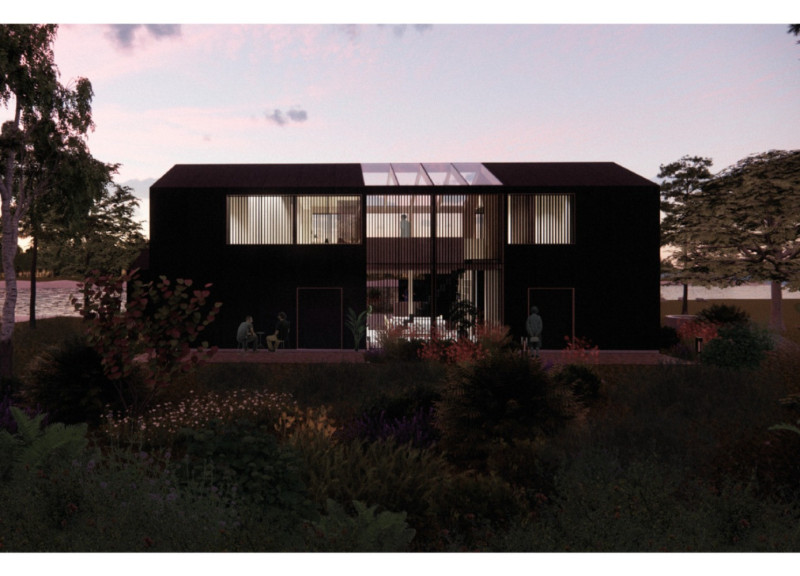5 key facts about this project
The Painters' Lake House is located in Latvia, designed to embody the principles of a traditional viensēta. This concept revolves around communal living, with an emphasis on bringing people together. The layout consists of several buildings assigned to specific activities, such as work, bathing, and rest, all organized around a central courtyard that acts as the heart of the living space.
Building Arrangement
The structure features a series of individual flats that surround a public circulation core. This core encourages interaction among residents while enhancing accessibility throughout the complex. It functions like an entrance typically found in historic Latvian farms, making the space inviting. At night, the core acts as a guiding light, helping residents find their way and fostering a sense of connection and warmth.
Functional Spaces
A notable aspect of the design is the sauna, which is placed near the lake. This element highlights local cultural traditions focused on wellness and relaxation. The arrangement of spaces allows for generous views of the lake, offering opportunities for social interaction as well as private contemplation. The layout is carefully planned to support community activities while also providing areas for solitude.
Sustainability
Sustainability plays a key role in the overall vision. Most buildings, including common areas like the sauna and workshop, are accessible to all residents, which nurtures community spirit. The inclusion of a planted garden provides space for gardening activities, helping residents become more self-sufficient. The use of reclaimed timber cladding aligns with the commitment to sustainability and respects the local architectural heritage.
Artistic Integration
The walls of the Painters' Lake House are made from light timber and function as canvases for artistic expression. This quality encourages residents to engage with their surroundings in a creative way. The design emphasizes a close relationship between indoor spaces and nature, making the architecture a meaningful part of the living experience. Each element of the structure contributes to a cohesive lifestyle that connects people with both art and their environment.






















































